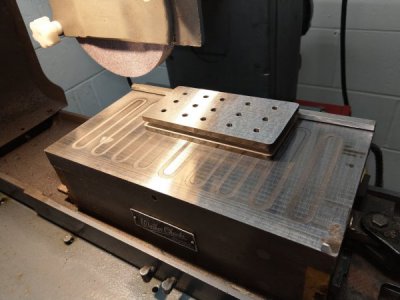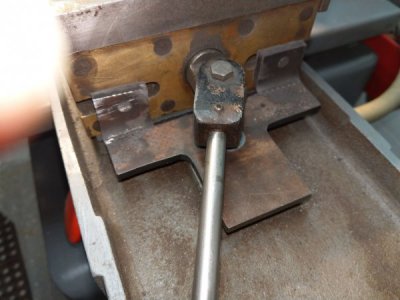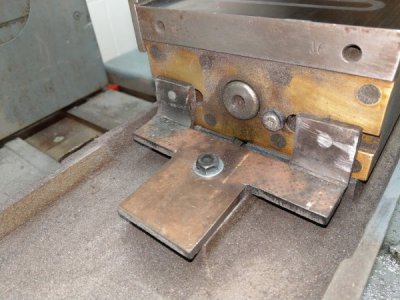A brief update on my Sanford MG surface grinder:
As I mentioned earlier, I found that the table surface on my grinder had a "tilt" of about 3 thou; the magnetic chuck had a compensating tilt of 3 thou. After debating with myself as to whether to try to correct this, I decided to leave well enough alone for the time being and just clean up the surface of the magnetic chuck. I also made some new chuck clamps, as the old ones were basically hacked together by some previous owner (and also interfered somewhat with the handle for the magnetic chuck).
I'm the first to admit that this surface grind is not great - you can clearly see a periodic wheel bounce pattern (I don't have a wheel balancer yet). I should also note that the few large dings you see in the surface were not caused by me - they were there when I got the chuck. In fact the whole surface was pretty rough when I bought the machine - I don't think the previous owner ever ground it in.
Sitting on the chuck is a fixture plate I picked up at an estate sale. It had been milled flat by whoever made it, so I decided to surface grind it as a test piece. I ground both sides, and checked it on my surface plate; I found a variance over the entire surface of about 5 tenths. On the one hand, 5 tenth is not exactly super-duper for surface grinding, but considering that the piece was only my third attempt at surface grinding I'm happy with the result.
At this point I think I have the machine working well enough that I can now work on improving my technique, work on balancing and dressing the wheel, and just basically learning the fine art of surface grinding.

Here's are pictures of the new chuck clamps I made - that's the on/off handle for the magnetic chuck in the middle; the tightening bolt for the clamp is hidden under the handle.

Here's the other clamp, showing the hex bolt for tightening more clearly. It's hard to see in the pictur, but there is a gap under the hex nut of about 1/8" - not much but enough to clamp down the mag chuck. I also had to make two new T-nuts.





